Prague calls to Lisa and she hops a train to this majestic city on another 3-day weekend in May.
Prague well-known for its red roofs,
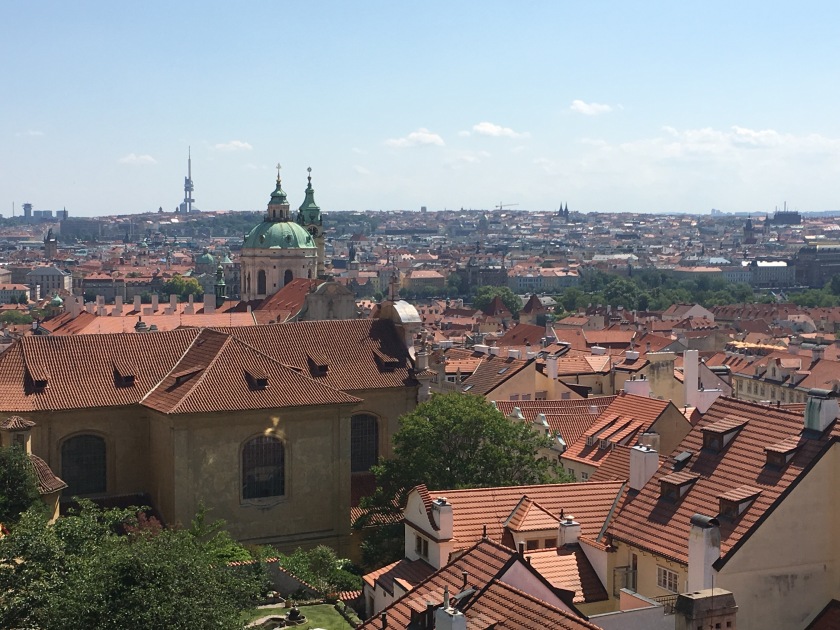
and the famous Charles Bridge,
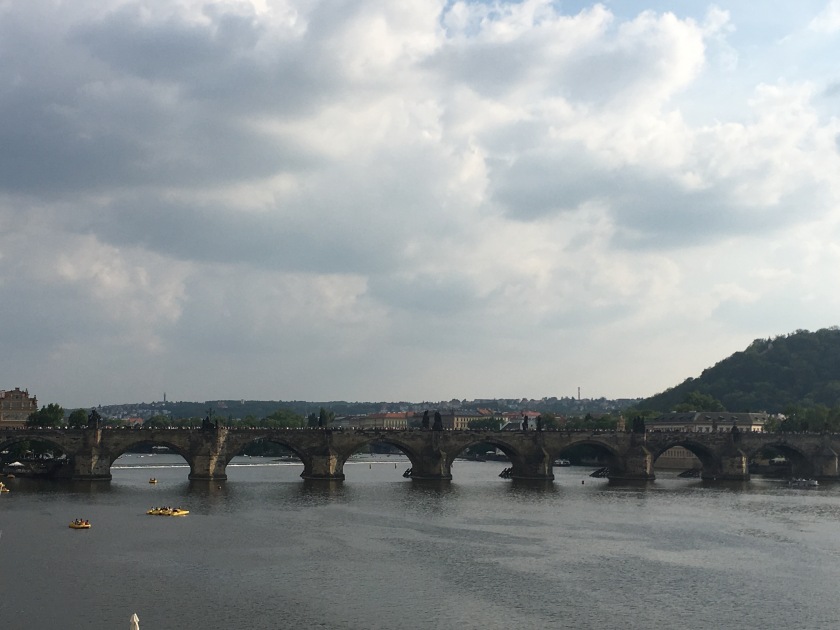
holds many secrets and surprises for this first time visitor.
I arrive before noon, and step right into a vintage car show outside the train station.
Throughout the weekend I see many of these restored vintage Czech cars, from the 1920s and 30s, carrying visitors around the cobbled streets of Prague.
My hotel is in Old Town Square, Staroměstské náměstí, (can’t possibly pronounce it), but a fabulous location.

Among the famous sites here is the Astronomical Clock, sadly down for repair until some time summer, 2018. (Photo below from a sign.)
With only a weekend available t me, I have an endless number of choices. The architecture alone could occupy my entire visit.
From Romanesque,
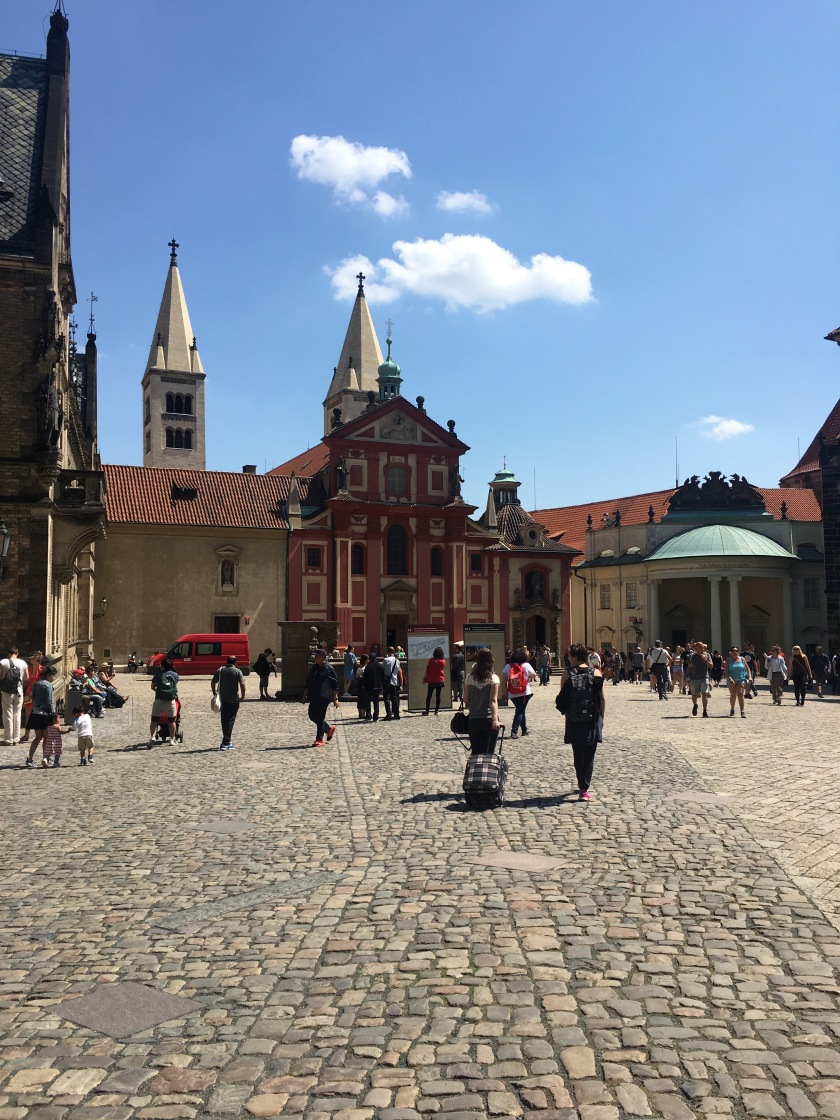 Basilica St. George on the grounds of Prague Castle
Basilica St. George on the grounds of Prague Castle
to Renaissance,
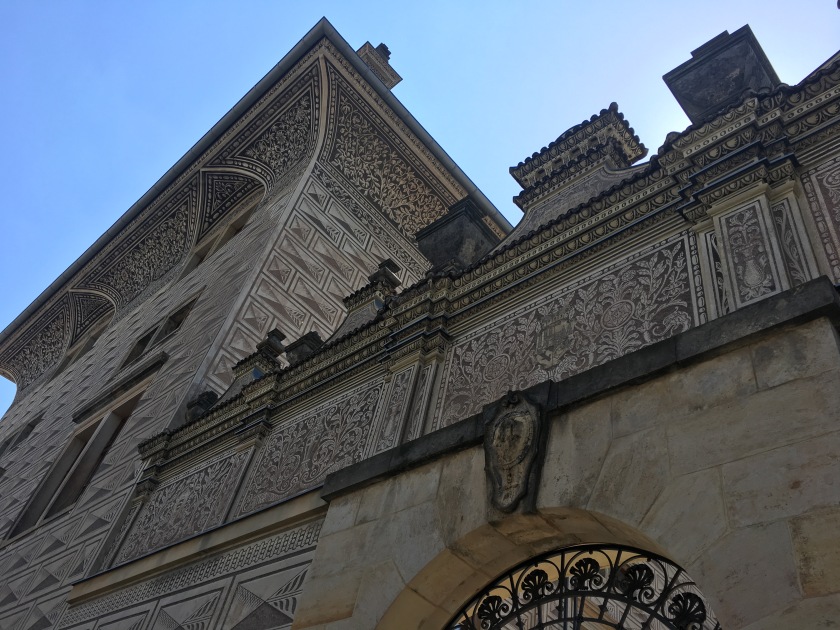
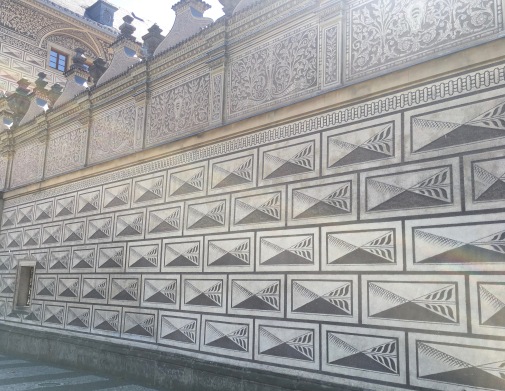 Schwarzenberg Palace near Prague Castle
Schwarzenberg Palace near Prague Castle
Baroque,
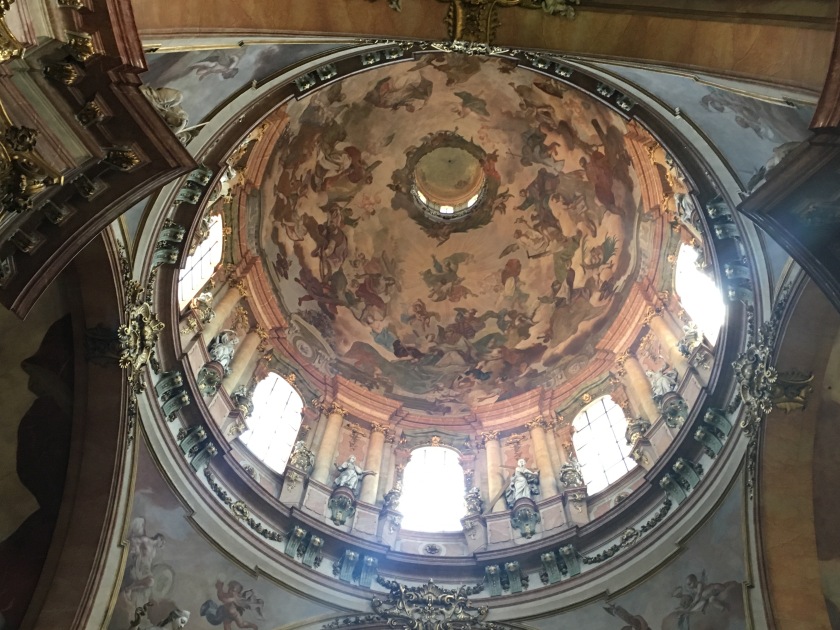 Inside St. Nicholas Church
Inside St. Nicholas Church
and Art Nouveau,
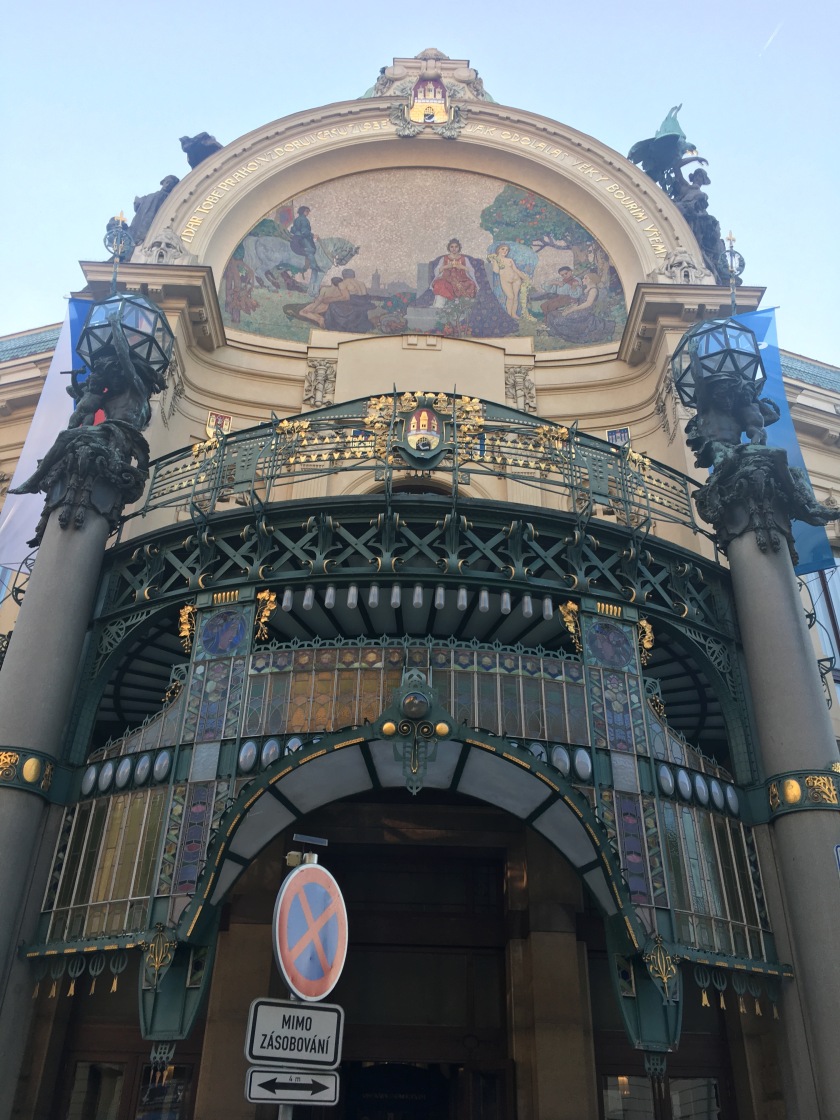 Municipal House
Municipal House
the city abounds in different styles of architecture. The most frequent I see are examples of Gothic architecture.
 Towers of Church of our Lady Before Tyn behind other buildings in Old Town Square
Towers of Church of our Lady Before Tyn behind other buildings in Old Town Square
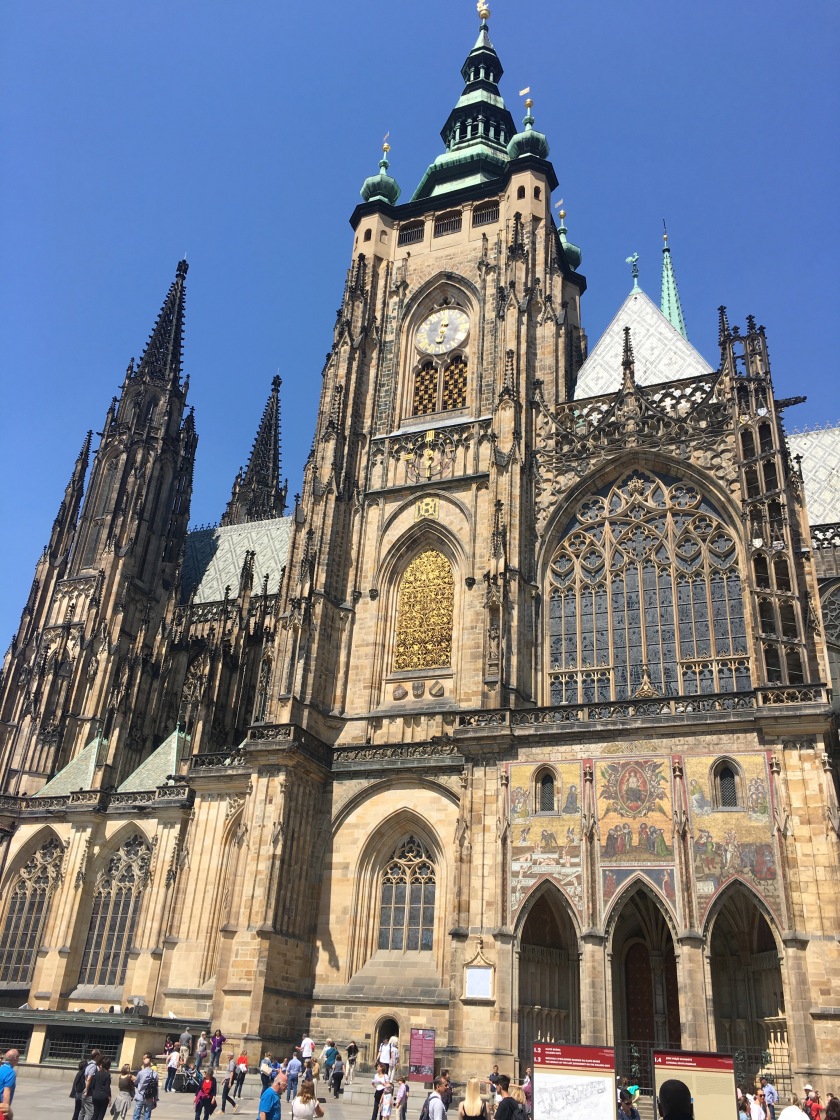
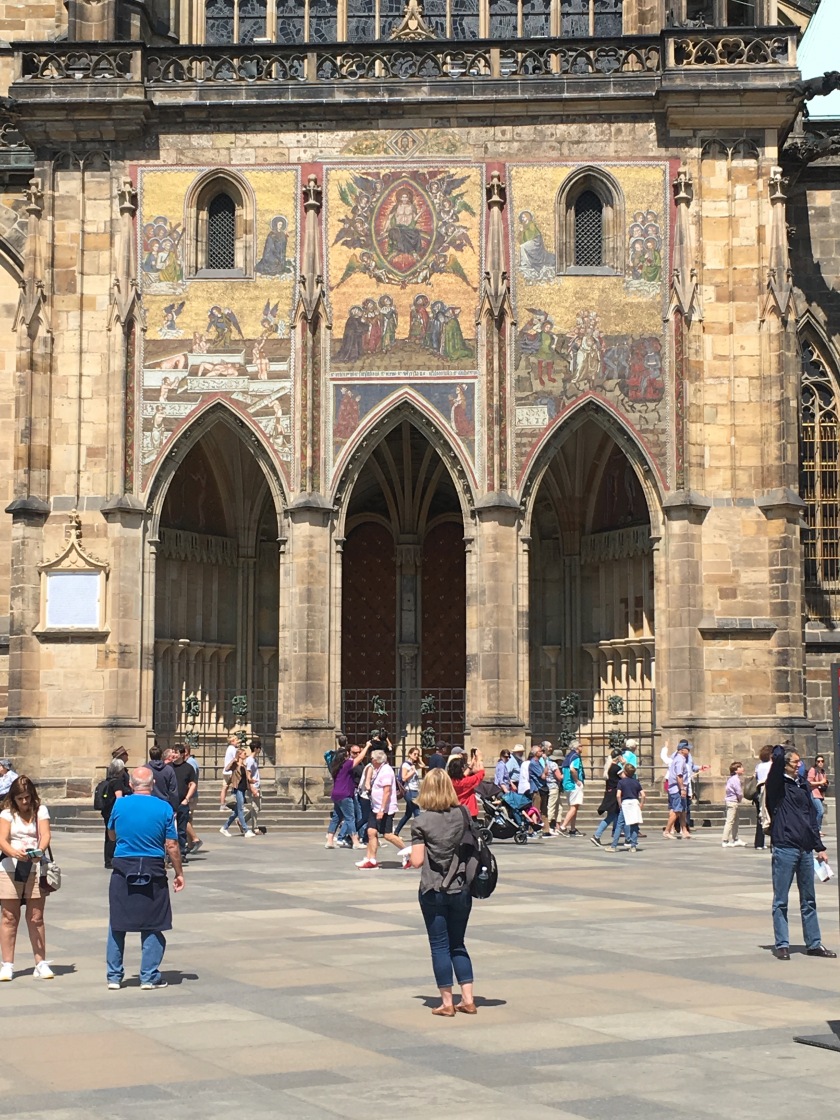 St. Vitus Cathedral, on the grounds of Prague Castle
St. Vitus Cathedral, on the grounds of Prague Castle
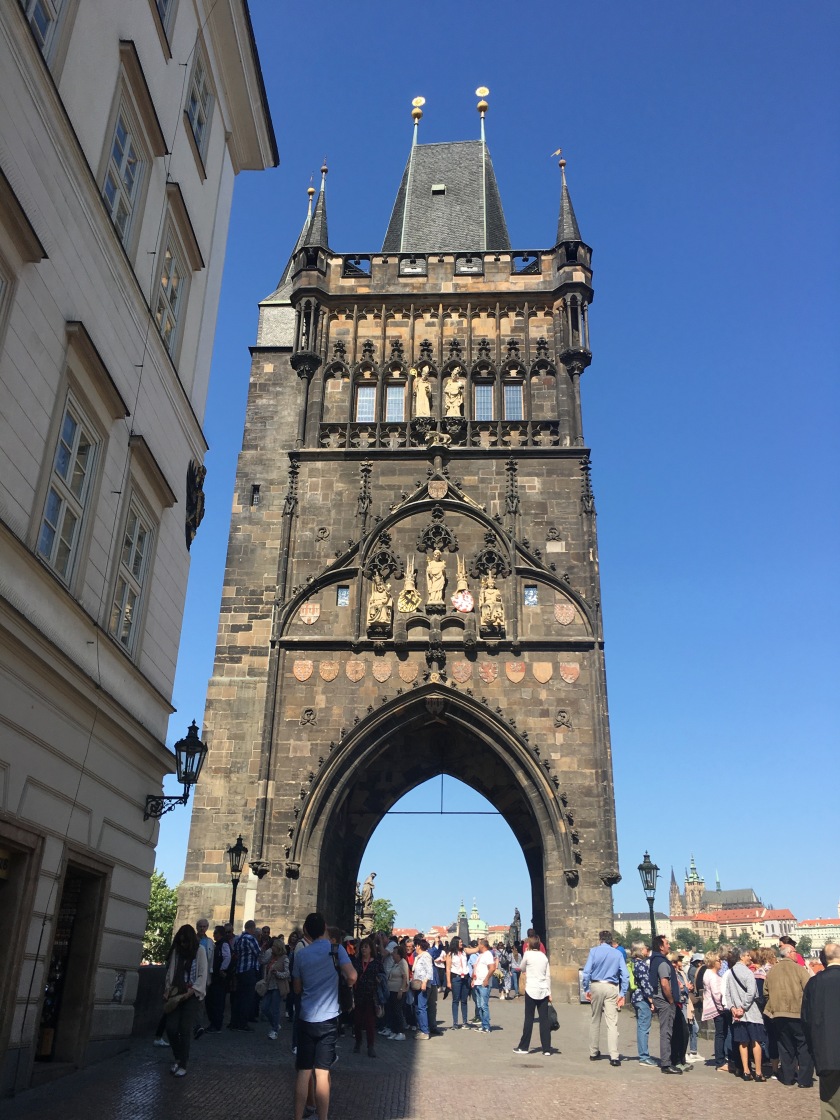
Tower, Charles Bridge
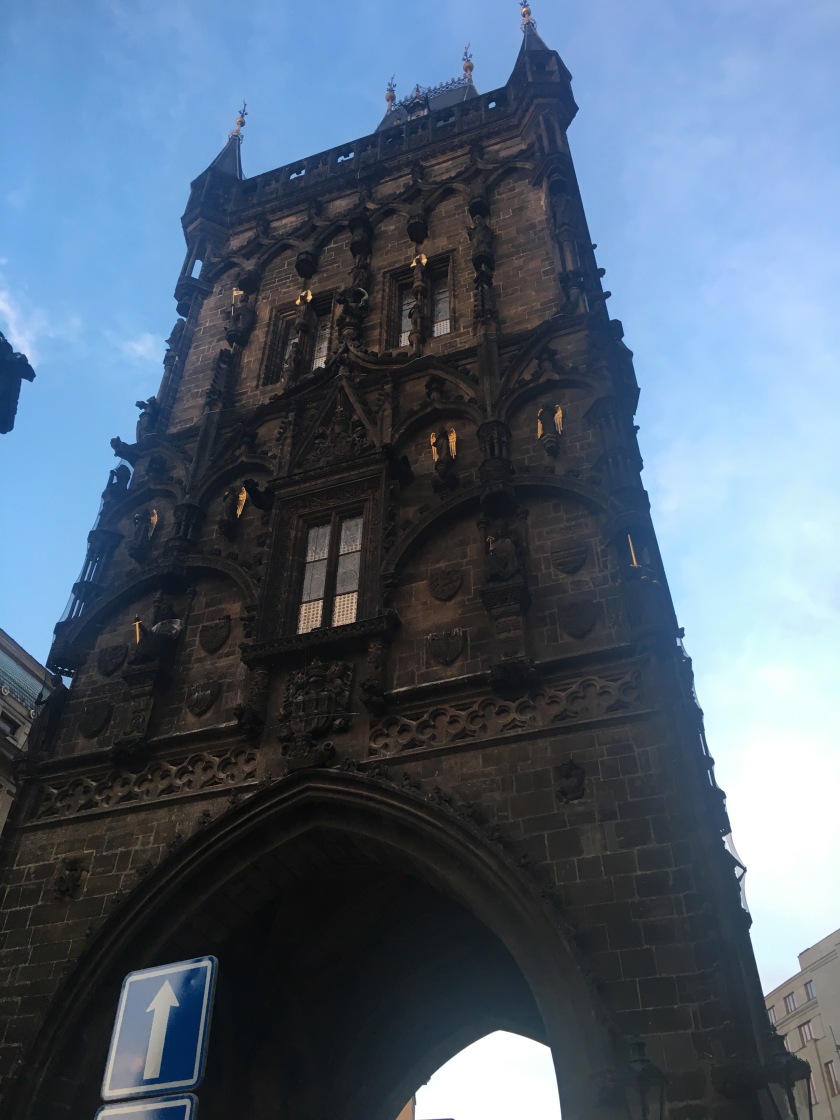 Powder Tower, modeled after the Charles Bridge Tower
Powder Tower, modeled after the Charles Bridge Tower
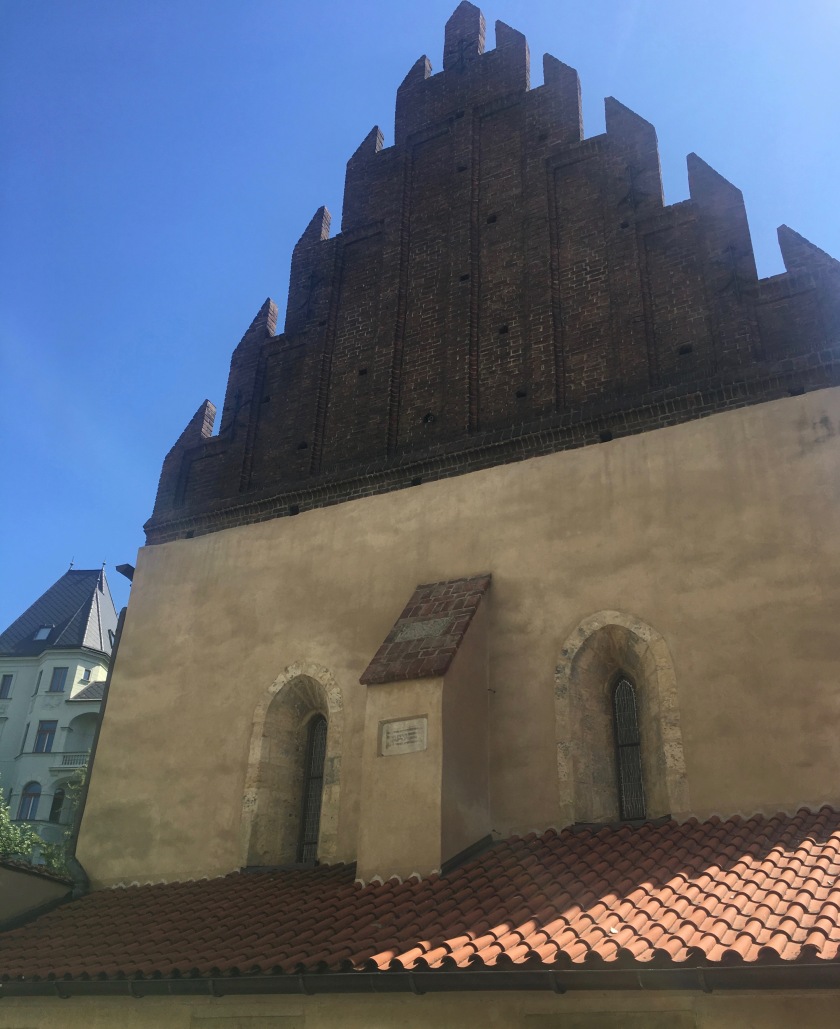 Old New Synagogue
Old New Synagogue
One area of interest is the Jewish Quarter, Josefov. Friends have recently visited Prague and recommend a visit to several of the area synagogues. Unfortunately, I arrive on a Jewish holiday and many buildings are closed. So I walk the streets and take in the bits of history from the outside.
The Old New Synagogue, pictured above, is the oldest active synagogue in Europe. Dating back to 1270 it is one of Prague’s first Gothic buildings.
I walk by the Old Jewish Cemetery. The cemetery was in use between the 1400s and 1700s, but was closed in the late 1700s when all burials inside city limits were banned for hygienic reasons. A multitude of markers representing as many as 100,000 people interred, crowd one another. The cemetery reportedly has 12 layers due to the limited space of the time and the prohibition in Jewish law of moving remains.
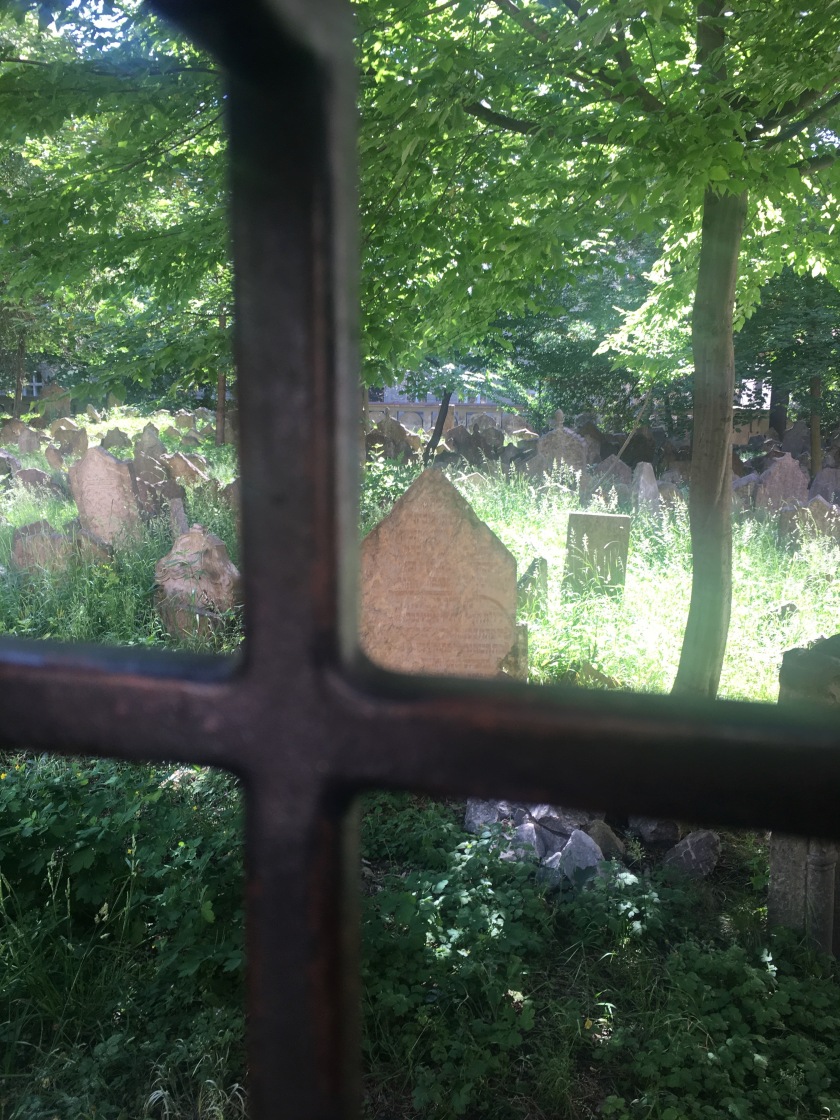
Across from the cemetery, I see a more lighthearted site: the Golem Bakery. Golem is a mythical creature in Prague legends, known to be a protector of Jews.
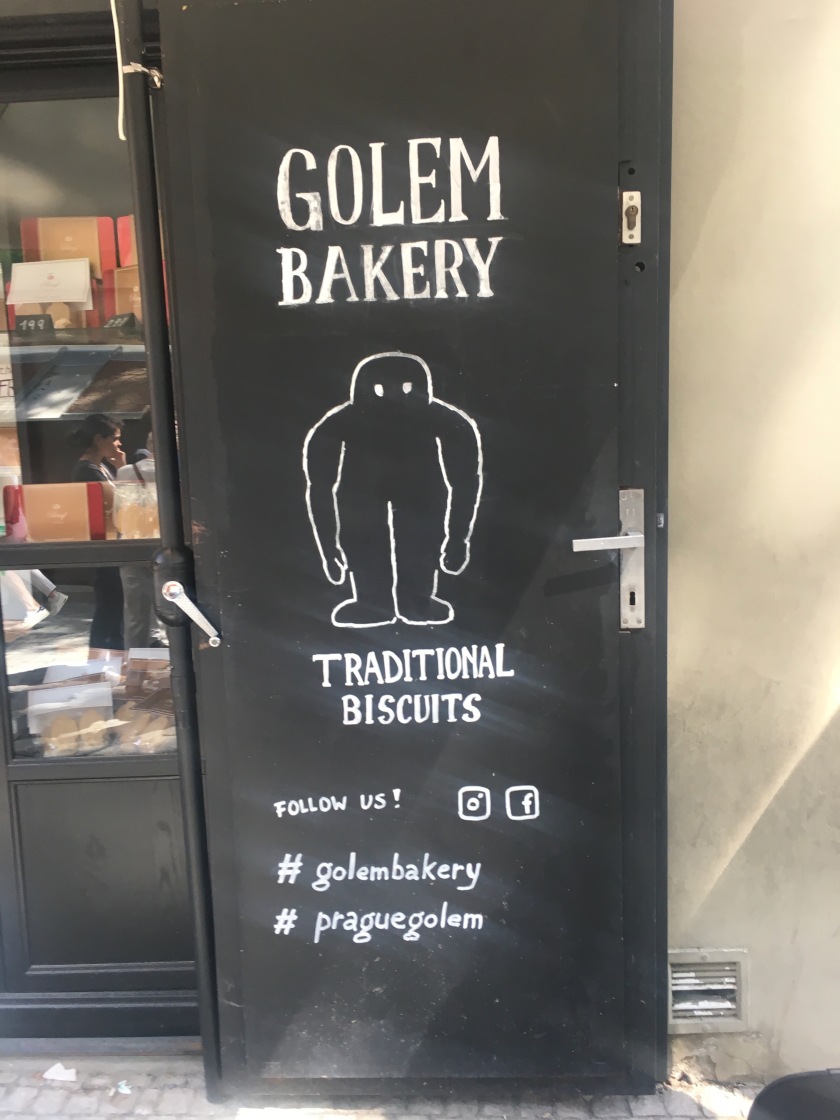
Before leaving the Jewish Quarter, I visit one more gem, the Spanish Synagogue, Španělská synagoga, built in Moorish Revival style.
In front of the Spanish synagogue stands one of many tributes to Franz Kafka. Tributes to the Jewish Czech author, born in Prague, can be seen throughout the city.
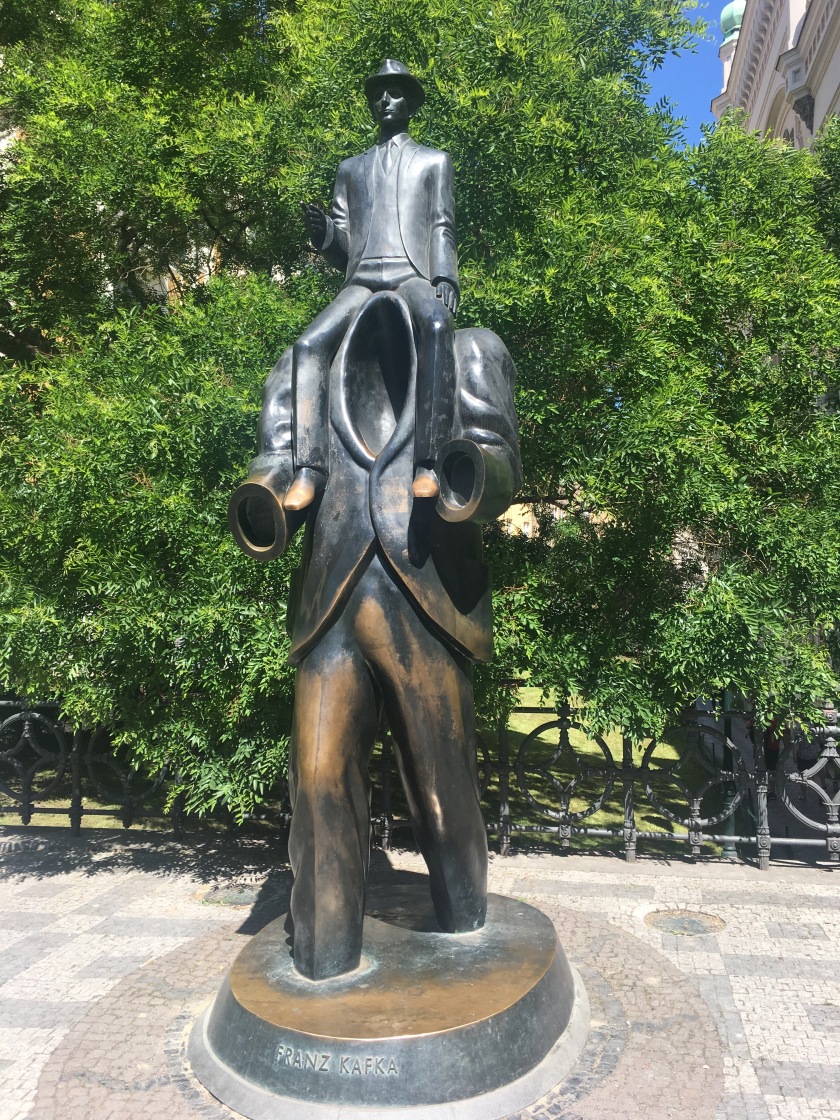
Kafka looms large in Prague, in spirit and in form, reflected in the large rotating sculpture of his head, created by Czech sculptor, David Černý. (video at end of post)
From Kafka on to another famous icon, I go in search of the John Lennon Wall. In the 1980s, the wall became an unofficial tribute to the singer, with spontaneous graffiti and messages. Although the original art is long gone, I am still drawn to check out the new additions that plaster the wall and provide entertainment to all who visit. One source suggests that the wall actually belongs to the Military Order of Malta, (what?) but clearly no monitoring or oversight exists.
The Yellow Penguins (Cracking Art Group) are nearby on the Vltava River, (they light up at night).
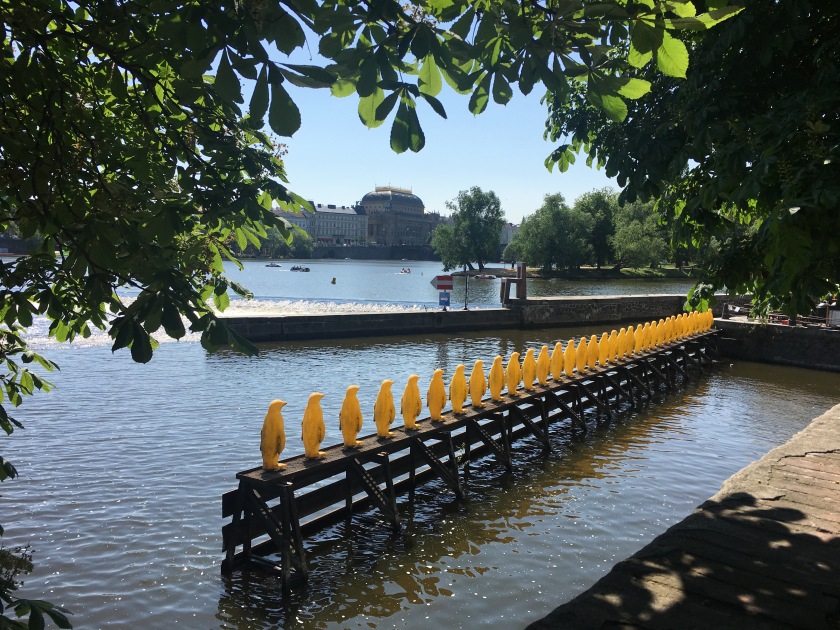 And the famous Crawling Babies, by Czech sculptor, David Černý, are in Kampa Park.
And the famous Crawling Babies, by Czech sculptor, David Černý, are in Kampa Park.
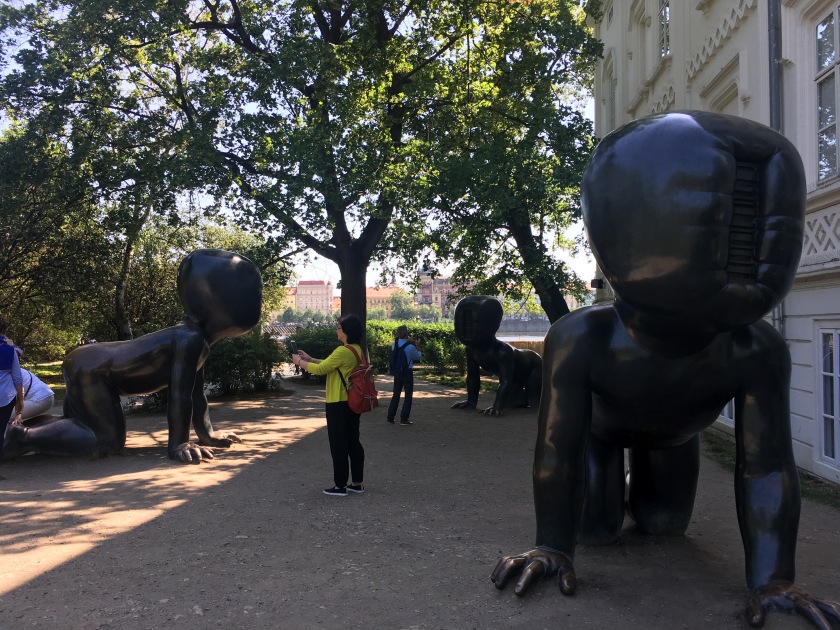
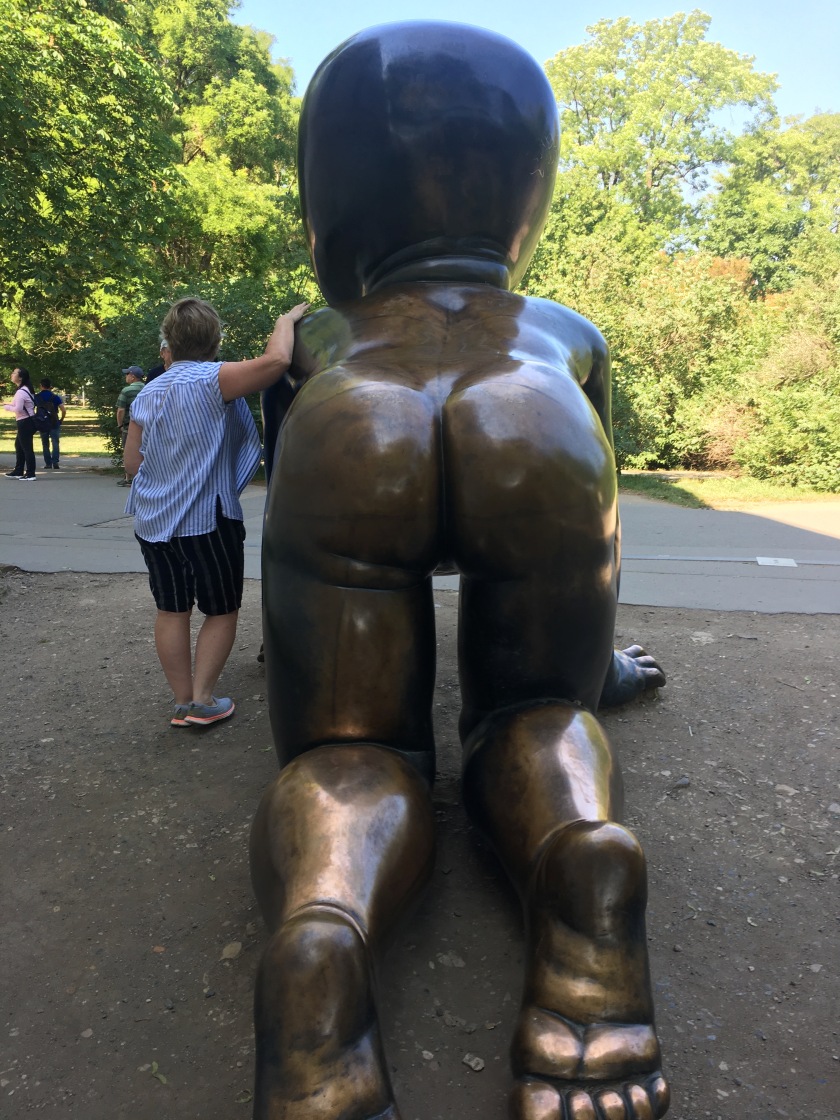
Near the Lennon Wall I also catch a glimpse of “Devil’s Stream” (still not clear why it is called that) through love locks. Scenes from famous movies including Mission Impossible and Amadeus have been filmed here.
Wenceslas Square brings home a bit more of the cultural history of the area, and reminds me of the not so distant struggle for freedom that took place here, and claimed the lives of many.
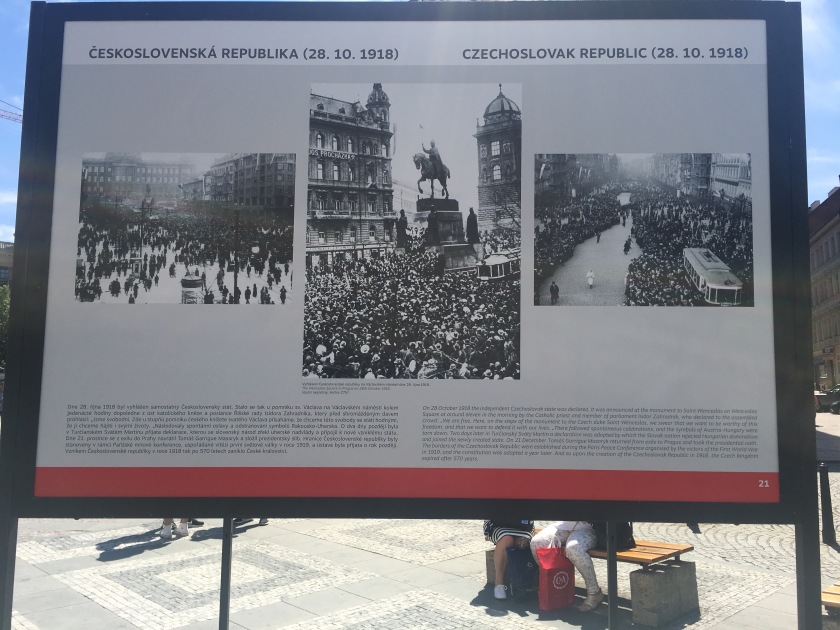
The plaques, below, commemorate Palach, who self-immolated in rebellion against the end of the Prague Spring (a time of liberalization, and extended freedoms of speech), followed by the 1968 invasion by Warsaw Pact countries. Zajic, a friend of Palach, also self-immolated on the 21st anniversary of communist takeover.
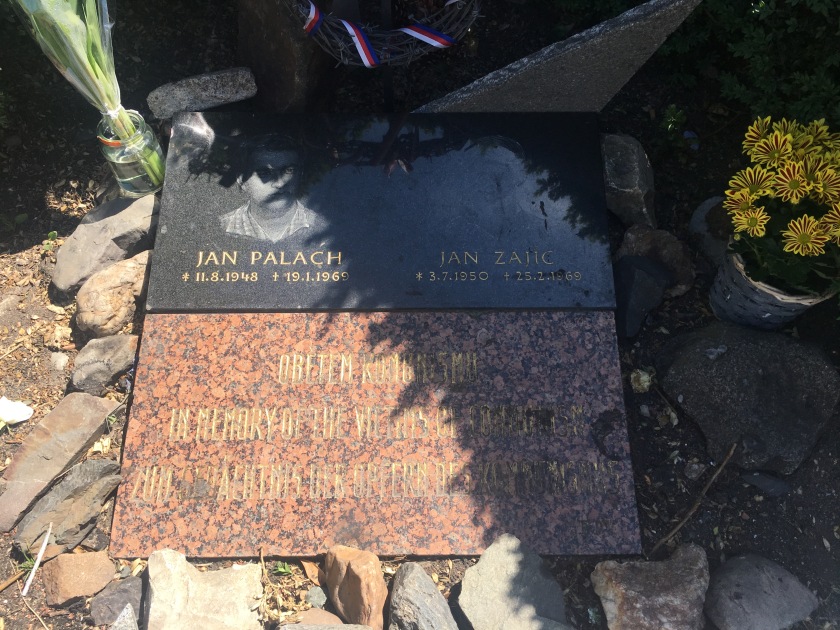
Sadly Zalic did not live long enough to see the dismantling of communism during the “Velvet Revolution”, that took place just months later.
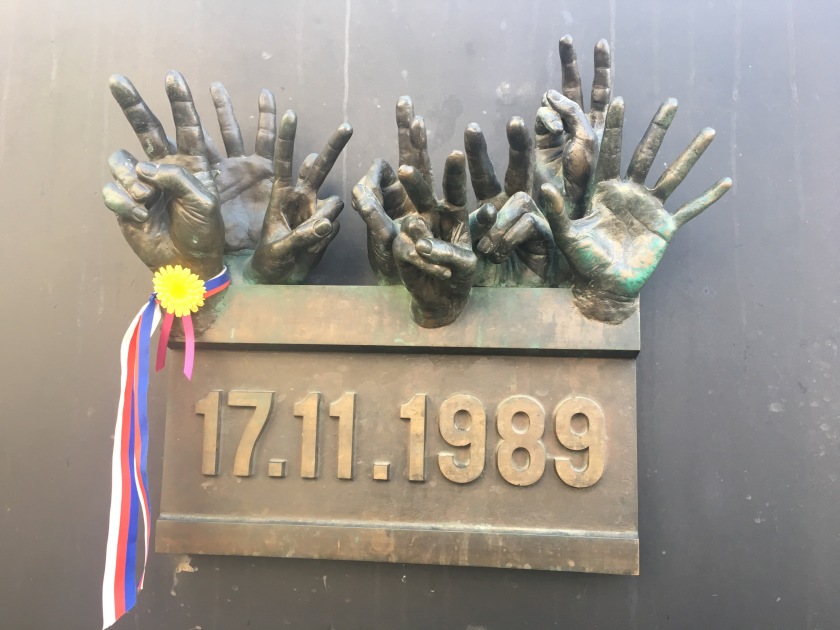
As I am leaving Wenceslas Square I come upon a small protest and wonder what the nature of it is. I ask the desk person at the hotel, with whom I’ve had several interesting conversations, and she dismisses this as a “paid protest” by Ukrainians living in Prague. Although I don’t fully understand the purpose of the march, it punctuates the new hard won freedoms of the Czech Republic, with the right to free speech and gathering.
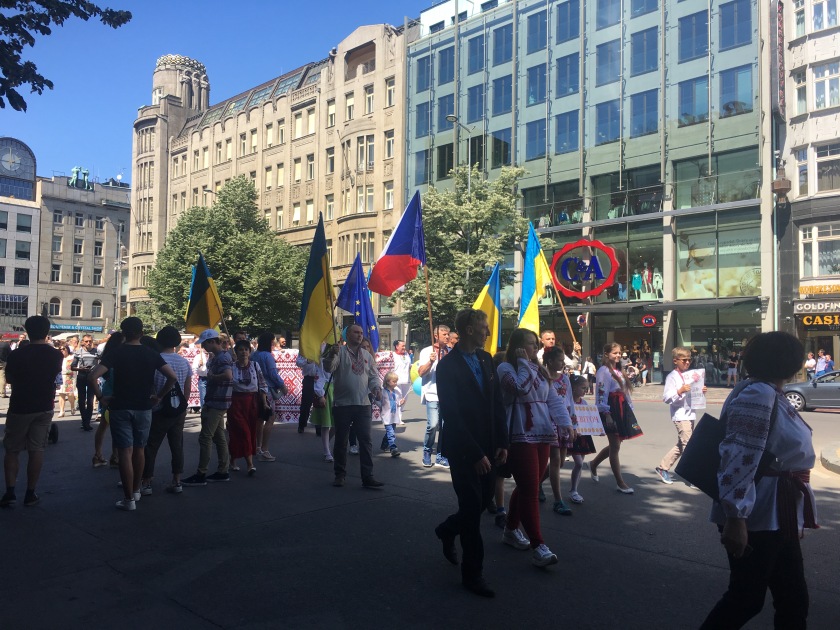
A trip to another country is not complete with a mention of food. Prague is a very international city, hosting a wide variety of ethnic foods, I come across a few that dot the streets or show up in the morning breakfast at the hotel.
The first, Trdelniks, cooked over an open fire on the street, a round pastry, similar to a doughnut and sprinkled with sugar and cinnamon.
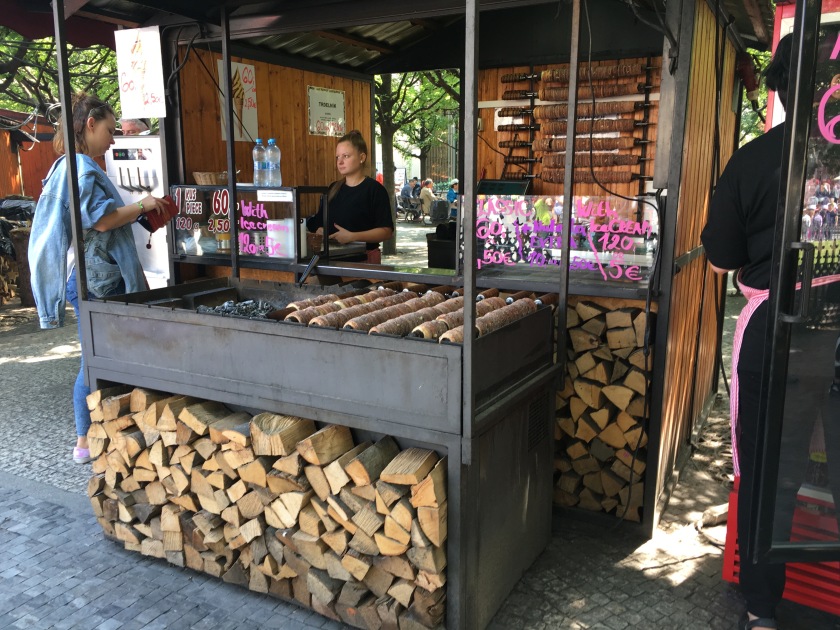
Apple Strudl, my favorite,
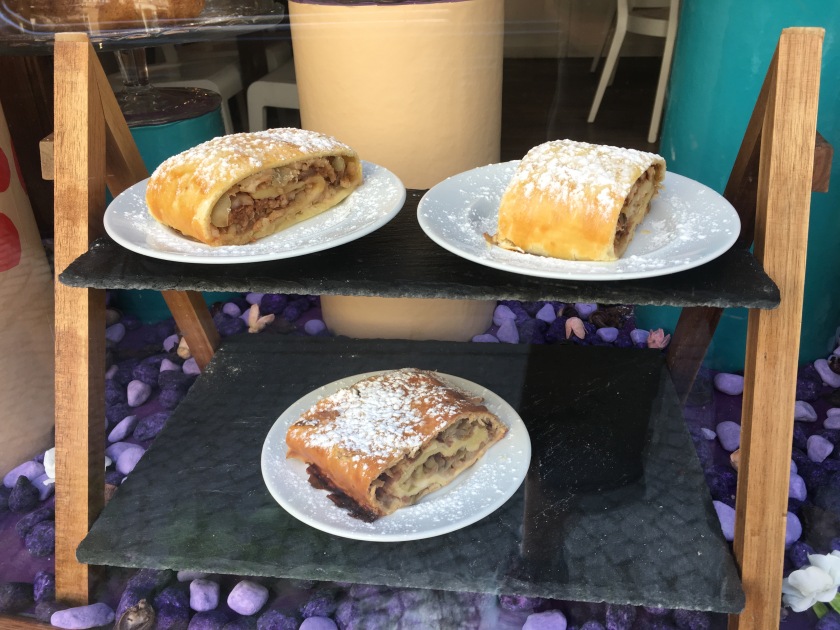
and potato chips on a stick. A great snack after hours of walking in the heat around Prague Castle.
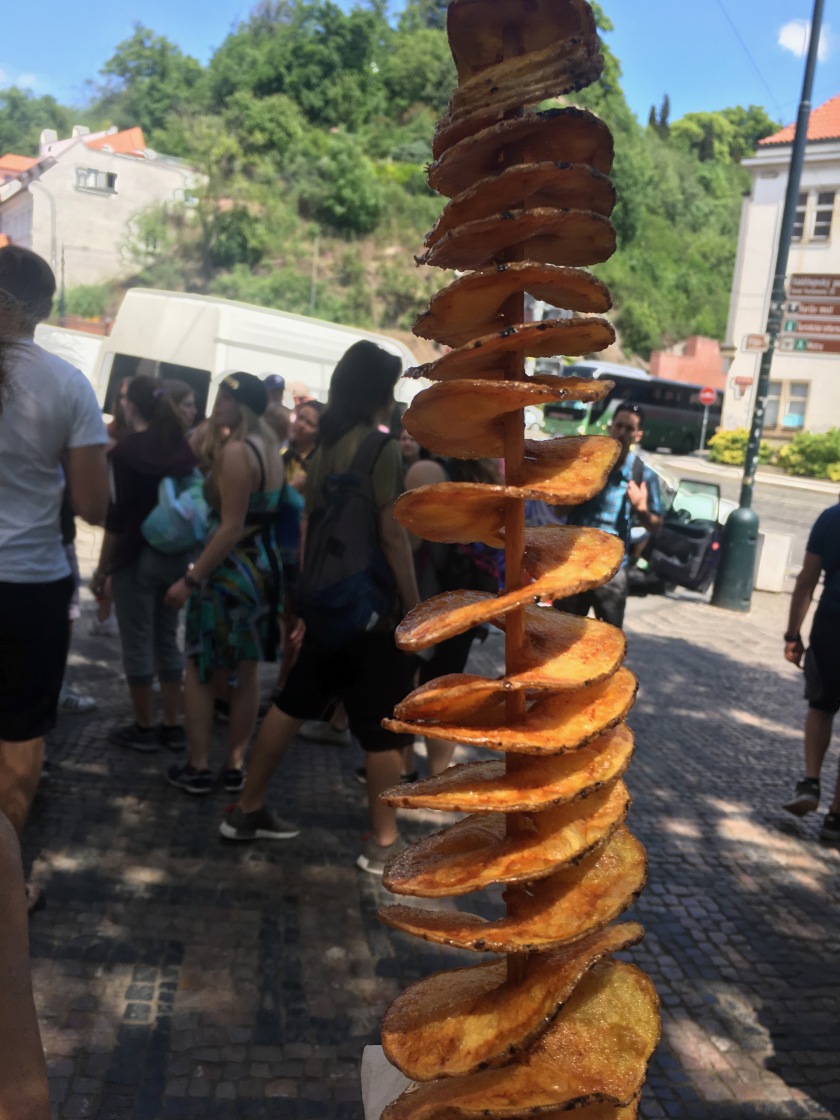
On my last day I visit Prague Castle. I come expecting a castle similar to what I’ve seen in childhood tales, but instead find a palace-like structure, with multiple buildings including a cathedral and a basilica, all total measuring 70,000 sq. meters. A UNESCO World Heritage site, conceived in the 9th century, the website describes Prague Castle as:
“… a large-scale composition of palaces and ecclesiastical buildings of various
architectural styles, from the remains of Romanesque-style buildings from the 10th century through Gothic modifications of the 14th century. ”
Needless to say, I am not prepared to spend an entire day combing the grounds, and to add to the timing challenge, I arrive at 12 noon, with the changing of the guard, similar to Buckingham Palace.
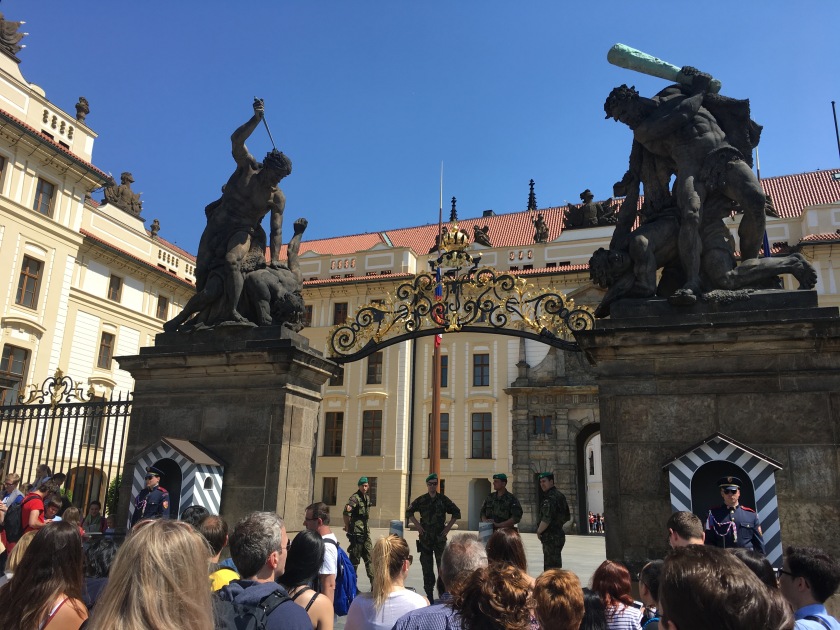
But I take a bit of time to view what I can of the palace from the outside.

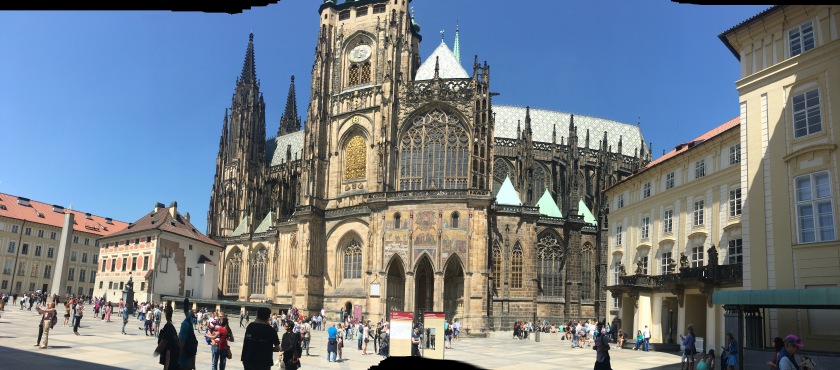
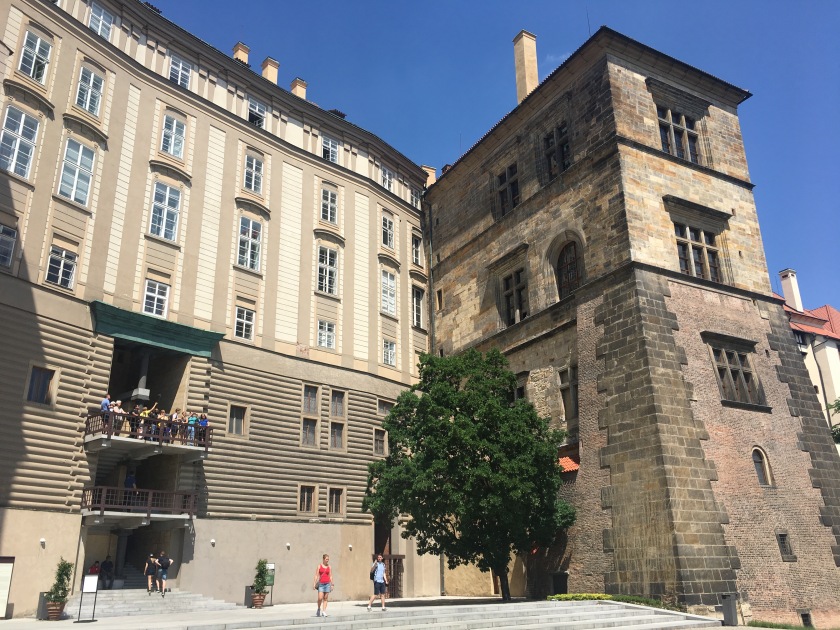
One sign along the way mentions the Golden Lane, Zlatá ulička, named for the goldsmiths who worked there in the 1600s, but originally called Alchemists’ Alley. According to legend, this was a mysterious place where the world-famous alchemist Edward Kelley worked on turning metal into gold. But accounts vary, and some say alchemists were never on the premises. Regardless, I’m intrigued and figure out how to purchase a ticket.
I first come upon No. 22, the miniature house belonging to Franz Kafka’s sister, and where Kafka lived and worked here from 1916 – 17.
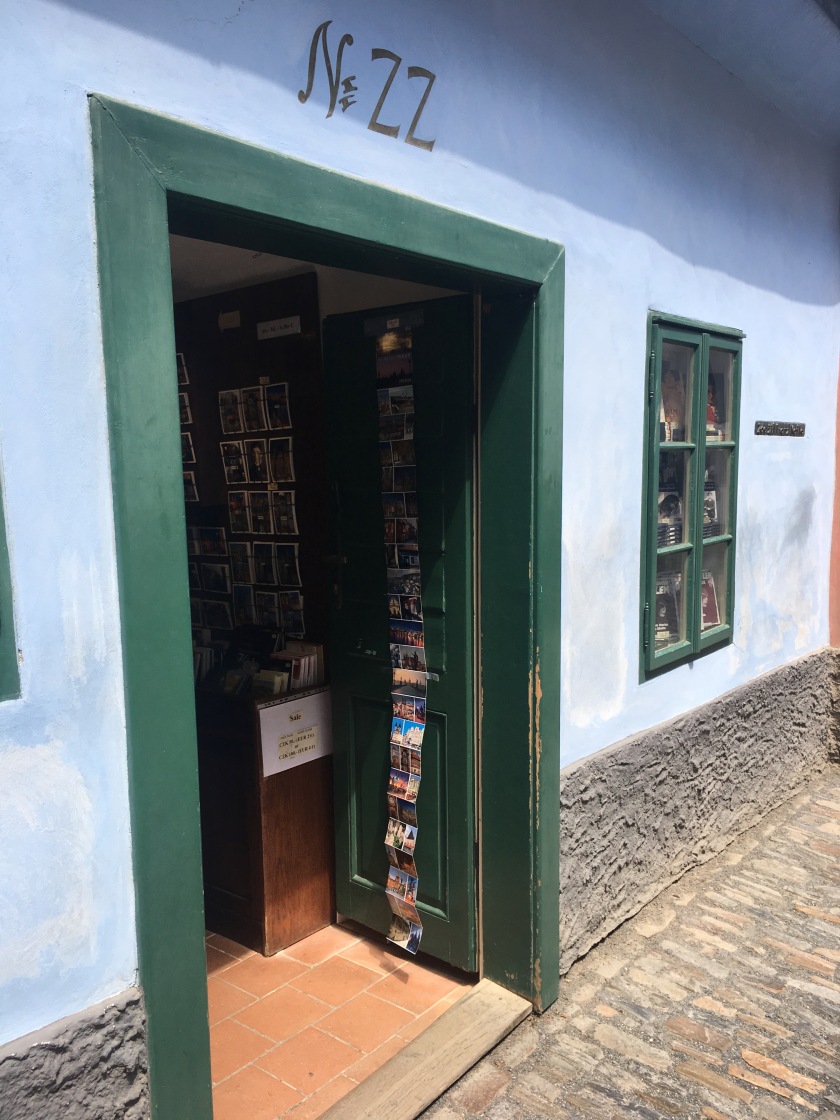
Just next door, Zlatá ulička 14, you find the tiny home of fortuneteller,
Madame de Thebes, aka Matylda Průšová, said to have predicted the fall of the Third Reich, and she died during Nazi interrogation.
The final stop is at number 12, which once was home to historian Josef Kazda, known to have saved thousands of Czech films from the Nazis.
Journeying through time and place, it’s now time to return to the present day. I head to the train station with hundreds of other weekend travelers, rich with experience and glad to rest my feet from cobbles for a few hours on the train back to Berlin.
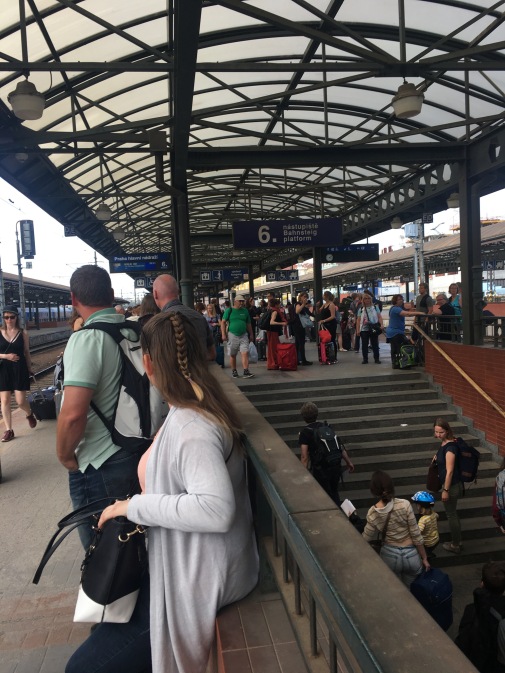
© Lisa Howells and Mary Reynolds, 2018


























Great overview! Such a vibrant city
LikeLike